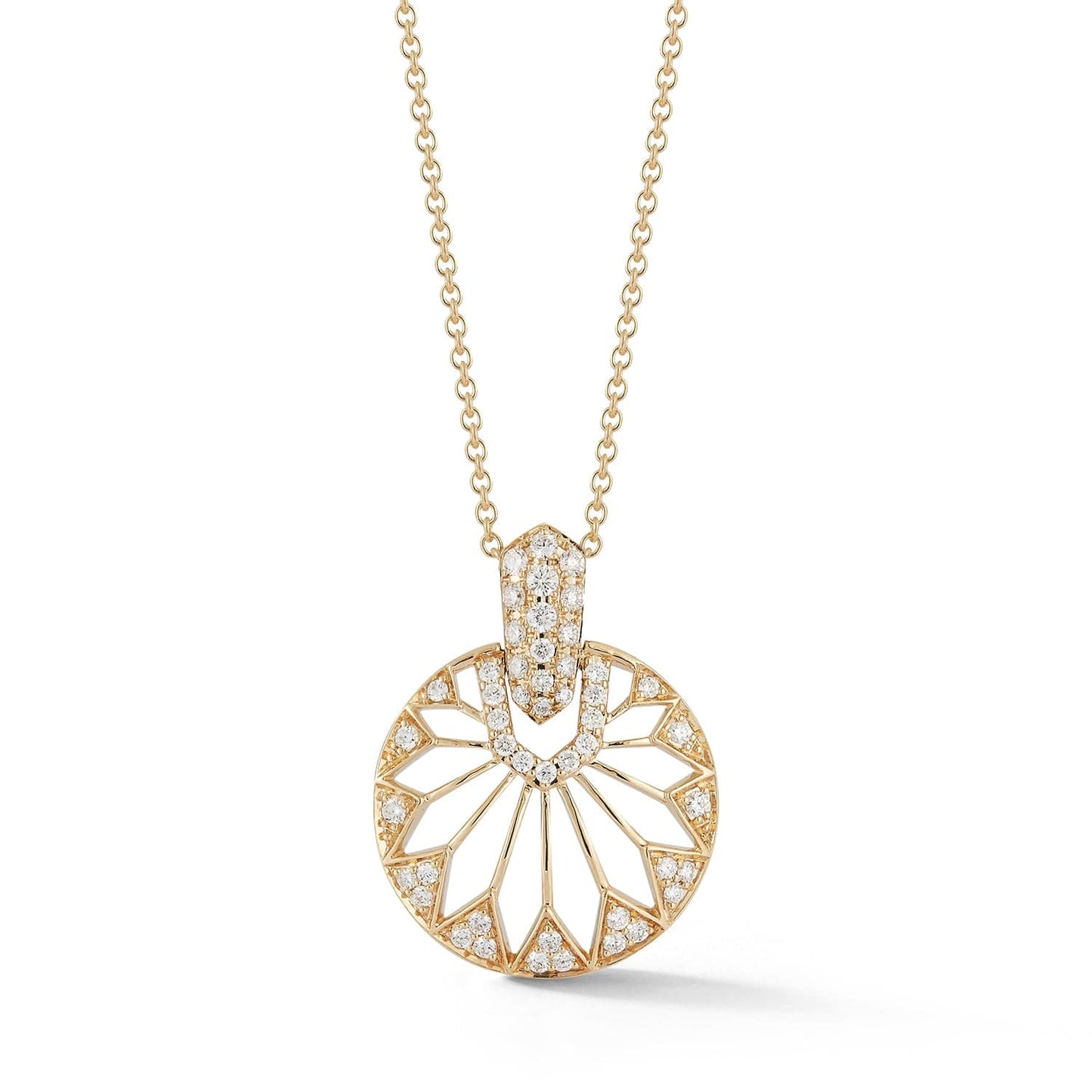
In our mission to bring sustainable and ethical diamond jewelry to the broader market, we understand that buying diamond jewelry can be daunting, especially with labeling misconceptions that can hold back buyers and collectors from realizing the full benefits of these precious stones.
To make it easier for you, we have established three clearly defined categories for diamonds.
Natural diamonds are formed under high temperature and pressure conditions about 100 miles beneath the earth’s surface. A natural diamond is made from carbon, and it is the hardest natural known substance on earth. It takes at least one to three billion years for natural diamonds to be created, at least 85 miles below the earth's mantle under natural conditions of very high pressure and high temperature.
Lab-grown diamonds are coined with many names including lab-grown, man-made, manufactured, above-ground or cultured, according to the Federal Trade Commission (FTC) - the U.S. government body in charge of ensuring fair business practice to protect consumers.
Each diamond is created using a controlled technology process in a laboratory or factory. These diamonds are also made of pure carbon crystallized in an isotropic 3D form that mimics some natural diamond properties.
Diamond simulants are simply imitations made of non-diamond materials, such as rhinestones, moissanites, white sapphires, or cubic zirconia. They may look like real diamonds but a natural diamond is harder than any simulant.
| Natural Diamonds | Lab-Grown Diamonds | Simulant | |
| Terms | Natural/Mined | Artisan-Made, Laboratory, Cultured | Manufactured, Imitation |
| Type | Mined | Man-Made | Made-Made |
| Price | Most expensive | 50% Cheaper | 90% Cheaper |
| Origin | Below the Earth's surface | Above ground in Lab | Above ground in Lab |
| Time to Create |
1B+ Years |
2 to 8 Weeks | 2 to 8 Weeks |
| Chemical Properties | Crystalized Carbon | Crystalized Carbon | Non-Diamond Material |
| Frequency | Finite | Infinite, no limitations in Lab | Infinite, no limitations in Lab |
| Formation Process | 90-100 Miles Below the Earth's Surface; Extracted by Open-pit, Marine Mining, Underground Mining and Alluvial Mining. | HPHT (High Pressure High Temperature) and CVD (Chemical Vapor Disposition) | CZs (Cubic Zirconia), Moissanite, Rhinestones |
To make it simple, a key distinction between natural, lab-grown and simulant diamonds is to think about earth made vs above ground. Above ground diamonds are diamonds made in a controlled environment through a technological process that mimics natural formation, and according to the FTC, can also be called 'cultured' and 'lab-grown'.
The FTC issued a ruling in 2018 that allows lab-grown diamonds to be called "cultured" and "lab-grown": “Since then, technological advances have made it possible to create diamonds in a laboratory. These stones have essentially the same optical, physical and chemical properties as mined diamonds.”
The differences between natural diamonds and lab-grown diamonds sometimes cannot be seen with the naked eye. There is specialized technology, like the GIA iD100 gem testing device that allows gemologists to distinguish simulated and lab-grown diamonds from natural diamonds.
For jewelers and gemologists without access to the technology can also send in diamonds to the gemological laboratory for verification. The GIA has a report service that allows industry manufacturers and jewelers to send in a parcel or package of diamonds that can be tested by GIA gemologists.
Jewelers without access to reliable detection technology can also send the diamonds to a gemological laboratory for verification. The GIA has a special report service in which a manufacturer or a jeweler can send in a parcel or a package of natural or lab-grown diamonds that can be tested in-house by GIA gemologists.
There is a never-ending debate over the use of the term ‘synthetic’ or even ‘artificial’ because it can be easily misinterpreted for ‘lab-grown’ or ‘simulant’ which is misleading and incorrect. The FTC has made changes to guidelines to clearly differentiate natural vs lab-grown diamonds. According to the FTC, the term 'synthetic' is no longer relevant considering the "term is often interpreted as being 'artificial' when in fact man-made diamonds are not artificial." Lab-grown diamonds may now be called gemstones, and lab-grown diamond producers are allowed to market their diamonds using the words "aboveground" and "cultured."
Since advancements in technology have made it possible to re-create the earth’s conditions and create diamonds atomically identical to mined diamonds, the use of the words such as 'synthetic' can mislead consumers as they can mistake it with 'artificial'. Man-made diamonds are not synthetic.
With enormous price disparity and growing popularity of natural diamond alternatives, it is important to highlight the clear distinction between all three diamond categories. As for FTC’s updated rules and regulations, it remains that natural diamonds and lab-grown diamonds get separate definitions. They are currently defined as one.
According to the FTC, “a diamond is a mineral consisting essentially of pure carbon crystallized in the isometric system. It is found in many colors. Its hardness is 10; its specific gravity is approximately 3.52; and it has a refractive index of 2.42.”
This guide aims to clarify some of the confusion and stigmas associated with all types of diamonds. We hope this helps you make informed decisions about investing in diamonds. Remember, whether you choose a natural diamond, a lab-grown diamond, or a diamond simulant, each has its unique properties.
At Laurenti New York, we believe in providing transparency and education to our customers so you can make informed decisions when purchasing diamond jewelry. Thank you for considering us as your independent destination for diamonds and fine jewelry.







